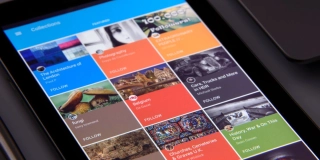What Is the Purpose of the Clinical Medical Report Analysis Assistant?
The Clinical Medical Report Analysis Assistant is an intelligent tool designed for doctors, healthcare staff, and administrators. Its mission is to automate the identification and extraction of essential medical data from electronic health records, streamline risk assessment, and support clinical decision-making with preliminary recommendations.
By leveraging advanced AI and multi-modal recognition, this assistant helps healthcare teams process medical records more efficiently, reduce repetitive manual work, and improve the quality and consistency of clinical documentation.
Who Can Benefit from This Solution?
- Physicians & Clinical Staff: Quickly extract and review structured patient data, saving time on documentation.
- Medical Administrators: Enhance workflow efficiency and data quality across departments.
- Healthcare IT Teams: Seamlessly integrate AI-powered analysis into existing HIS, EMR, or CDSS systems.
- Clinical Researchers: Standardize data extraction for quality control and research variable collection.
What Are the Use Cases of the Clinical Medical Report Analysis Assistant?
📝 Structured Medical Record Extraction
- Multi-format Input: Supports PDF, Word, plain text, and image-based records (jpg, jpeg, png, gif, webp).
- Comprehensive Data Capture: Automatically extracts patient demographics (with de-identification), chief complaints, present illness history, past medical/surgical/family history, allergies, and more.
- Physical & Lab Data: Pulls vital signs (temperature, BP, heart rate, BMI) and key lab results (CBC, biochemistry).
- Diagnosis & Treatment: Identifies preliminary diagnoses and initial treatment suggestions, outputting all data in standardized field-value pairs for easy EMR/database integration.
⚠️ Clinical Risk Assessment & Alerts
- Abnormality Highlighting: Instantly flags out-of-range values (e.g., elevated blood glucose) and common high-risk conditions (hypertension, arrhythmia, infection risk).
- Risk Grading: Combines abnormal findings to assess overall risk level (medium/high), with clear explanations.
- Standardized Alerts: Generates actionable recommendations for urgent follow-up, such as “seek immediate evaluation to rule out acute myocardial infarction.”
🩺 Preliminary Clinical Suggestions
- Next Steps: Suggests further tests or monitoring based on abnormal findings (e.g., “order Holter ECG or cardiac enzymes”).
- Follow-up Advice: Provides observation and re-examination guidance for mild/moderate abnormalities.
- Health Management Tips: Offers lifestyle and self-care recommendations (e.g., “adopt a low-salt, low-fat diet, increase physical activity”).
- Customizable Output: Doctors can choose which modules to include or exclude, ensuring relevance for different clinical scenarios.
- Medical Compliance: All suggestions are logically structured and aligned with clinical guidelines, making them easy for physicians to review and refine.
Note: All recommendations are for clinical reference only and do not replace professional medical judgment.
🔗 Seamless Integration & Cross-Platform Access
- API Integration: Embed core features into HIS, EMR, CDSS, or research platforms for smooth workflow integration.
- Web & Messaging Apps: Deploy as an iframe, web widget, or integrate with WhatsApp, Telegram, Slack, WeChat Work, and more—enabling clinicians to analyze records within their preferred tools.
- Plugin Support: Connect to drug databases, medical knowledge bases, ICD-10/SNOMED/LOINC ontologies, and clinical guidelines for advanced terminology standardization and reference.
What Are the Key Features of the Clinical Medical Report Analysis Assistant?
⚡ Multi-Modal, Fast Extraction
Handles both text and image-based records, extracting structured data in seconds.
📄 Smart Parsing & Field Mapping
Automatically identifies and standardizes a wide range of clinical data points for seamless EMR integration.
🚦 Automated Risk Alerts
Flags abnormal values and high-risk conditions, supporting proactive clinical action.
📝 AI-Generated Clinical Advice
Delivers clear, guideline-based suggestions for further testing, monitoring, and health management.
🛠 Customizable Output
Supports specialty-specific templates and flexible modules for different clinical and research needs.
🔗 Robust Integration
API, widget, and plugin support for embedding into any healthcare IT environment or messaging platform.
Example Conversation
Below are real-world examples demonstrating how the Clinical Medical Record Analysis Assistant interacts with users and provides actionable insights from various types of clinical documentation.
1. Uploading a Clinical Report Image
User uploads a photo of a handwritten or scanned clinical report.

Clinical Medical Record Analysis Assistant

2. Analyzing a Word Document (Clinical Case.docx)
User uploads a clinical case in .docx format.

Assistant Output:

3. Assessing a Case of Prolapse from an Image
User uploads an image of a clinical report describing a gynecological case.

Assistant Output:

How to Create and Train Your Own Clinical Medical Report Analysis Agent
🏥 How to Build Your AI Agent
- Define Your Workflow: Identify which processes (e.g., EMR structuring, risk alerts, research extraction) you want to automate.
- Gather Clinical Templates: Collect department-specific requirements and guideline references.
- Deploy on a Trusted AI Platform: Use platforms like GPTBots for secure, rapid deployment.
- Integrate with Your Systems: Connect via API or widgets to your HIS, EMR, or research platforms.
🧪 How to Train Your Assistant
- Upload Diverse Samples: Regularly update with various record formats and annotated data.
- Simulate Real Scenarios: Use actual clinical cases and feedback to refine extraction and risk logic.
- Continuous Optimization: Monitor usage analytics and user feedback to improve accuracy and expand specialty support.
FAQs: Clinical Medical Report Analysis Assistant
Q1: Do I need a medical background to use this tool?
No. As long as you can upload clear, readable medical documents, the assistant will automatically extract and analyze key information in a structured, easy-to-understand format.
Q2: Can it process scanned or photographed medical records?
Yes! The assistant supports common image formats and uses OCR to extract data from scans or photos of paper records. For best results, upload high-quality, clearly printed images.
Q3: Can it adapt to different clinical specialties?
Absolutely. The assistant supports custom templates for various departments and can be configured to extract specialty-specific fields.
Q4: Is it suitable for quality control or research?
Yes. Structured outputs can be used for building quality metrics, summarizing case features, and extracting research variables. Custom extraction rules can be set for specific research or QC needs.
Q5: How is patient privacy protected?
All extracted data is de-identified and encrypted, ensuring compliance with healthcare privacy standards.
Ready to Modernize Your Clinical Documentation?
Discover how GPTBots can revolutionize your healthcare operations.












